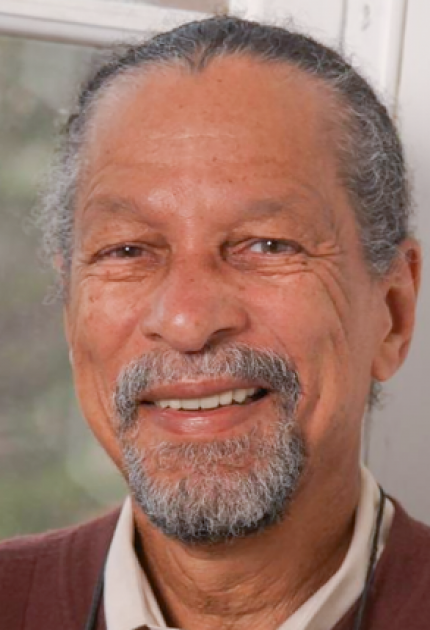Do you have a phone? Do you make calls on it, especially now in these times just to hear someone’s voice? Do you know someone who has a hearing aid so they can hear better? Do you remember tape recorders? Do you know what these all have in common? Microphones! All of these devices use microphones so we can hear ourselves and so others can hear us. These microphones used are called electret microphones, founded by a Black Innovator, named James. E West.
Born on February 10, 1931, much like other innovators who enjoyed building things, James E. West also enjoyed tearing things down. There is a method though. It was stated by West, “If I had a screwdriver and pliers, anything that could be opened was in danger… I had this need to know what was inside.” It’s important to note that while building things is important, taking things apart is just as important, as it is helpful to know what makes things work. West really started to truly love the concept of electricity after an accident with a radio that he was deconstructing. He knew that he wanted to pursue science academically, much to the chagrin of his parents. See, James E. West made this decision in the late 30s/early 40s in the South, back when Jim Crow laws were in place. His parents believed that these laws and racism would hinder his road to becoming a scientist and they wanted him to become a physician instead. However, Mr. West is not one to be deterred from his path.
In 1953, West attended Temple University to study physics and started working as an intern for the Acoustic Research Department at Bell Laboratories in New Jersey. After receiving his bachelor’s 4 years later, Bell Laboratories hired West as an acoustical scientist at a full-time capacity. It was here where West started to develop the electret microphone.
While working at Bell in 1960, West partnered with Gerhard M. Sessler, a fellow scientist, in order to develop a microphone that was inexpensive, sensitive, and compact. This electret transducer-reliant product took two years to finish development on, and four years after that point, the electret microphone was in mass production. Here’s the sheer importance of it and how much it is used: the electret microphone, the invention by West and Sessler, became the industry standard. Today, 90% of all contemporary microphones, ones in telephones, camcorders, hearing aids and more, use their technology. This is amazing how much we use this device in our everyday lives, and it’s sad that plenty of us haven’t heard about James E. West before.
About 30 years later in 1997, West was appointed president-elect of the Acoustical Society of America. He then joined the National Academy of Engineering a year later. A year after that, West and Sessler were inducted into the National Inventors Hall of Fame. Not only was James E. West innovative in his inventions, he was also innovative in recruitment of the STEM field. He worked with initiatives that entreated women and students of color to explore and pursue careers in the STEM field.
In 2001, after over 40 years with Bell, James E. West retired. Usually, after retirement, you don’t really ask, “What’s next?” Well, James E. West asked himself that, and decided to become a research professor. Among all the universities with whom he had intrviews, James E. West chose Johns Hopkins, specifically their Whiting School of Engineering.
This isn’t it with James E. West. This man has developed more than 250 patents on microphones and polymer-foil electrets. He has received plenty of accolades and honors. He also was known as a prolific writer, authoring and contributing to numerous scientific papers and books. James E. West’s discoveries are relatively recent, as this was about 50 years back. That is not a very long time, and it’s unfortunate that more people don’t know about him, or haven’t learned about him. Well, I’m here to do my part. Thank you, James E. West for your contribution and work, your legacy will not be forgotten. MT Out!
Biography.com Editors. James E West Biography. 2 April 2014. 23 July 2020.
Photo creds: National Inventors Hall of Fame


